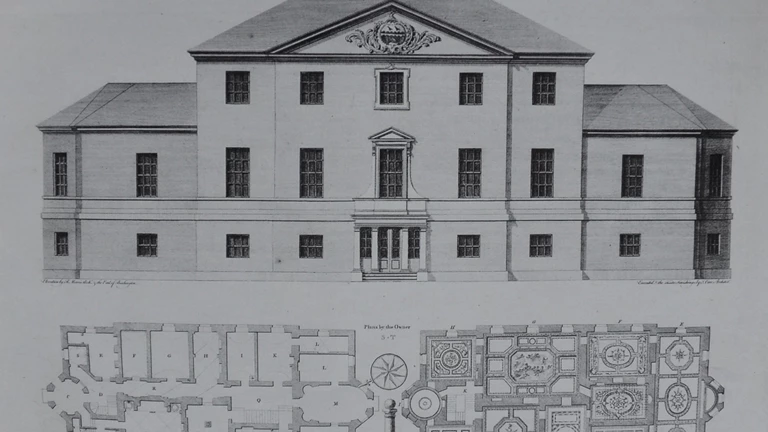
In the late seventeenth century Sir Stephen Thompson had five brothers and uncles, Henry MP, Edward MP, Jonas, Richard and Leonard. All were Merchant Adventurers, most were Aldermen of the city and they served York (and themselves) in many beneficial ways.
Unravelling the early history of the Thompson family in York is fraught with complications especially when first names are repeated time and time again and numerous intermarriages between families were common. Our own Henry Thompson of Kirby Hall in Little Ouseburn (pictured) was the son of Sir Stephen and married to Katherine Thompson, daughter of Edward Thompson. One of their daughters, Lucy, was to marry the wine importer Thomas Croft of Oporto in Portugal where Richard and Jonas Thompson also had interests.
By 1739 a partnership was agreed between Stephen Croft (son of Thomas), Richard and Jonas to own the house, business and Bodega in Oporto and the sons of all the family members were expected to give some time to act as agents and factors in the enterprise, not just in York, but in London and Oporto.
Exports from Portugal were the mainstay of the Thompson family fortunes and in 1754 it was recorded that the partners had an eighth share of two ships, the Bromley and Prince of Wales, suggesting that wine imports and exports were not the only commodity traded by the company. From admiralty papers it seems entirely likely that at least one of the ships, Prince of Wales, was a successful privateer of six guns and 30 sailors, commanded by Captain Beale and sailing out of Guernsey. When not on escort duty for the company, it was said to be part of a fleet who, in the words of the admiralty were, "addicted" to ransoming captains and their cargoes! The Thompson family invested heavily in property holdings and had long-standing shares in lead and coal mining at Woodhall and Askrigg.
In York the families played their part in aiding the prosperity of the city. All the brothers and uncles subscribed to the building of Lord Burlington’s masterpiece, the Grand Assembly Rooms. Henry was elected one of the first Directors of the rooms alongside Lord Burlington himself and the two retained their interest and involvement, both being elected almost every year until Burlington’s death in 1753. We also know that Lord Burlington advised Henry on the designs for the Thompson Mausoleum at Holy Trinity Church in Little Ouseburn near to Kirby Hall in 1743.
From papers in York City archives both Henry Thompson and Lord Burlington were also asked to supervise the creation of a new racecourse on Knavesmire stray. Henry’s uncle, Edward Thompson had organised racing on Clifton Ings in previous years, so may well have been involved in the design of the new course. The Pasture Masters who regulated the use of the strays in York agreed, "to undertake (at their own expense) to build all the drains and bridges necessary to make a good course on Knavesmire, on condition that they have all ye entrance money for all the horses entered each year, in order for the reimbursement of their expenses."
Thus was the prosperity of York firmly established as a centre for ‘Polite Society’, and with the addition of a fine promenade by the river Ouse and popular Theatre Royal it provided plenty of entertainment for the well-to-do but more importantly, encouraged wealthy tourists to come and stay.
Henry Thompson commissioned the Thompson Mausoleum at Holy Trinity Church, Little Ouseburn in 1742, close to the family estate at Kirby Hall.
Artist unknown c. 1705, courtesy of York Art Gallery.
The Thompson family homes at Kirby Hall and Micklegate in York.
The creation of the Kavesmire stray racecourse in York. Courtesy of the Merchant Adventurers.